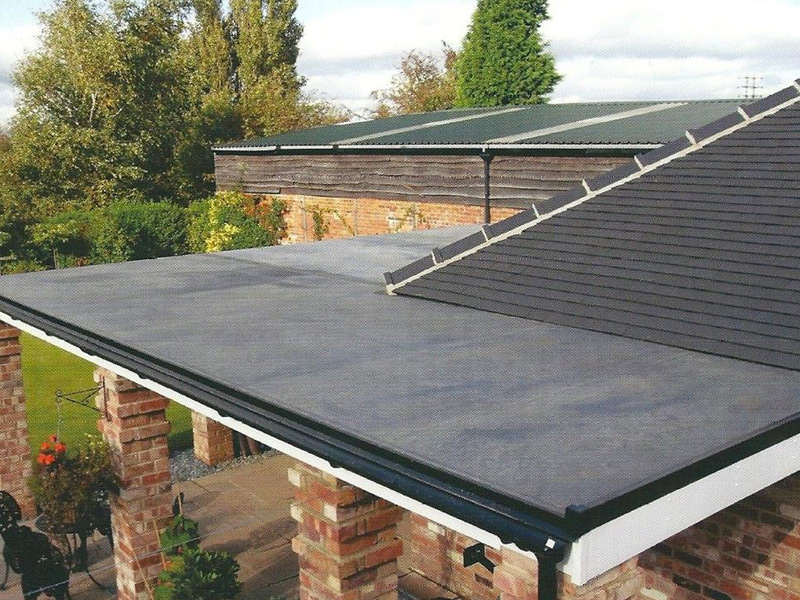
05 Feb Which Flat Roof? An Introduction to Torch On Felt Roofs
We have more questions about flat roofs than any other type that we supply.
To address these questions, we are providing an overview of each of the different types of flat roof we supply, starting with a traditional Torch On Felt roof.
Torch On Felt Roofs
One of the most common concerns about flat roofs comes from received wisdom about flat roofs from the past. They had a reputation for being leaky, expensive to repair, and short lived. The old-fashioned ‘pour and roll’ system has been giving flat roofs a bad name ever since. Since then, however, design and material improvements mean that Torch On Felt roofs are now a much better option, and can last up to twenty years. Modern systems are applied in 3 layers, consisting of a vapour control sheet, reinforced felt (2mm) and a ‘cap sheet’ (4mm). The cap sheet comes in a range of colours, and can either provide a reflective paint finish or a more traditional micro mineral fleck finish. These flecks help to break up the sunlight as it falls on the surface, to stop the bitumen melting.
Installation
Each sheet of felt is ‘melt welded’ onto the roof surface, and to itself, in the places where sheets overlap. This is done with a heavy-duty blowtorch, which the roofer directs at the areas to be sealed together. You should always use a professional roofing company with a good track record and testimonials. You could be liable if an unprofessional roofer fits your roof and is not licenced to use hot flame equipment.
Durability
A Torch On Felt roof is reliably durable for 10 years minimum. With good care and regular maintenance, it could last up to 30 years. There are measures you can take to ensure that the roof is not damaged. For example, never let anyone walk on a flat roof, or allow window cleaners or builders to put a ladder on them. In hot weather, this can lead to damage to the mineral or paint surface, which leads in turn to UV damage. UV damage will degrade the felt and cause it to become brittle and crack. Anything you can do to prevent physical damage to your roof will increase its longevity.
Repairs
When you have had your torch on flat roof for a few years, it is sensible to begin inspecting for damage annually, preferably in spring. This way you will be able to assess how your roof has weathered the winter, and book in repairs in plenty of time before the weather turns wet again. Look for scuffs, cracking or peeling. Your roofing contractor can quickly and easily repair these minor issues. Book in an inspection with your roofer, so that he can assess the need for repairs, and to get a quote. Repairs can often take just a few hours, which makes their maintenance extremely convenient, meaning reduced labour costs compared to pitched slate roofs.
Our next article examines EPDM Flat roofs in detail.


Sorry, the comment form is closed at this time.